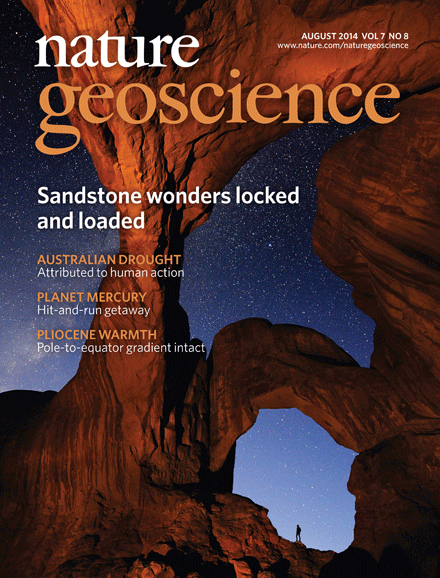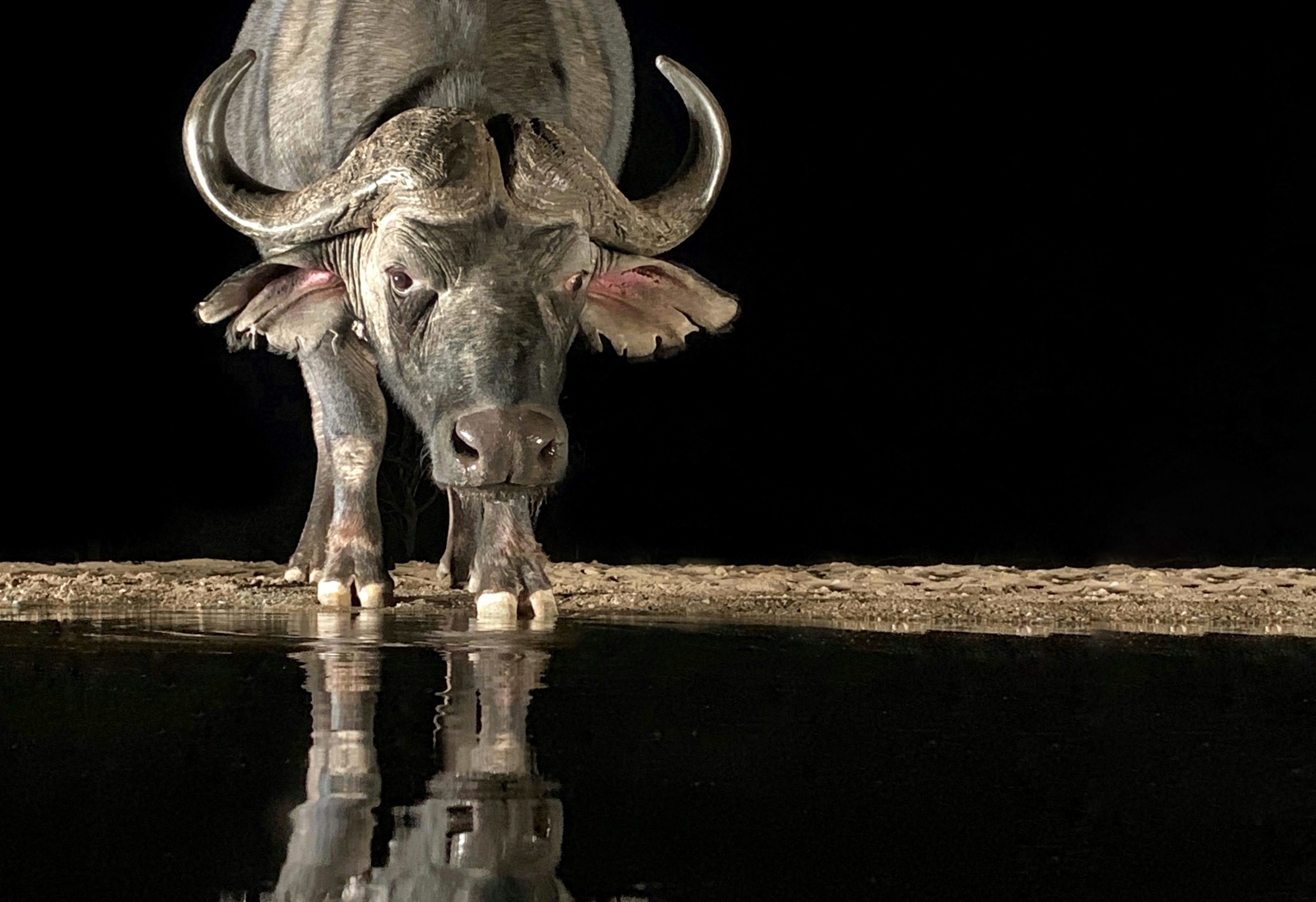Cover of Nature Geoscience
I’m a big fan of science, so it’s a great honor that the prestigious scientific journal Nature has used one of my rock arch images on the cover of their August issue. The image is called ‘At The Gates’ and features Double Arch, shot at night at Arches National Park, Utah, USA. The light painting was done by Daniella.
The title of the paper is ‘Sandstone landforms shaped by negative feedback between stress and erosion’ by Bruthans et al.
More info about the subject can be found here: nature.com
and here: youtube.com
THE STORY BEHIND THIS IMAGE
“Of all the National Parks that I have ever visited in the US, Arches National Park is without a doubt the most iconic. Many millions of photographs have been shot here, and to come up with something different is not easy. That does not mean one shouldn’t try though, and I personally greatly enjoy the creative process of coming up with new possibilities to photograph iconic subjects.
Double Arch is one of them. One of the reasons it has been photographed so much is probably because it’s so close to the car park, but also because it’s a stunning piece of architecture by mother nature. When you’re standing below this imposing marvel of nature, it’s hard to not be impressed by the size and the beauty of this amazing structure. From my research for my visit to Arches, I learned that 99.9% of all the images of this arch are more or less taken from the same viewpoint. I’m sure one of the reasons for this is that you need some distance to get the whole thing to fit inside your frame – standing inside the arch is not going to work. However, if you don’t try to fit the whole scene into the frame, new possibilities arise.
I decided to move into the scene and resist the temptation of showing everything. Instead of moving as far back as possible to see the entire structure, I tried to find an interesting foreground and move in with my 14-24mm wide angle lens. The opening inside the smallest arch was my main point of interest, so I opted for a vertical composition with some room at the bottom for the rocks in the foreground and quite a bit of space at the top to show the height of this place. Another good reason to go for a vertical was that the vast majority of images taken of this arch are all horizontals.
My second decision was to photograph the arch at night and to bring out the details and colors by using a flashlight. The light painting would give me a lot of creative control over the look and feel of the image, so that was an important part of the shot. I wanted to include part of the Milky Way, which meant that I had only a very short window of time to take the shot – the position of the Milky Way in the night sky changes constantly and I wanted it to be in a diagonal direction.
I knew that this was going to be an exposure blend; one for the sky and one for the rocks. In order to get a many stars as possible, you need at least an ISO of 1600, but more often around 3200 or even 6400. Your shutter speed can not be longer than approximately 30 seconds, otherwise the stars will start to streak. For the rocks exposure I could shoot at a fairly low ISO to prevent noise, with a considerably longer shutter speed. And I needed some extra time to light paint such an enormous subject.
For the light painting I used my trusty assistant, my wife Daniella. She was positioned outside of the frame to the left, armed with a Surefire Invictus flashlight and colored gels. I first decided on the color temperature of the light, and then we started experimenting with the light painting. Light painting is all about seeing the unseen, so you have to previsualize everything. After a few test shots, I decided to focus most of the light on the foreground and the main arch so that those areas will grab your attention first. However, the inside of the main arch didn’t catch enough light at the angle that I preferred for the whole scene, so I decided to shoot a second exposure just for the main arch with the light positioned directly below it. I would then later merge these two exposures.
Meanwhile I constantly checked the night sky for the position of the Milky Way, and when it looked good, I shot my third exposure for just the sky, without any light painting. The three exposures were later merged in Photoshop.”
Equipment and settings: Nikon D3, AF-S Nikkor 14-24mm f/2.8G lens – Rock exposure: 1 minute @ f/5.6 and ISO 800; Sky exposure: 25 seconds @ f/5.6 and ISO 3200



